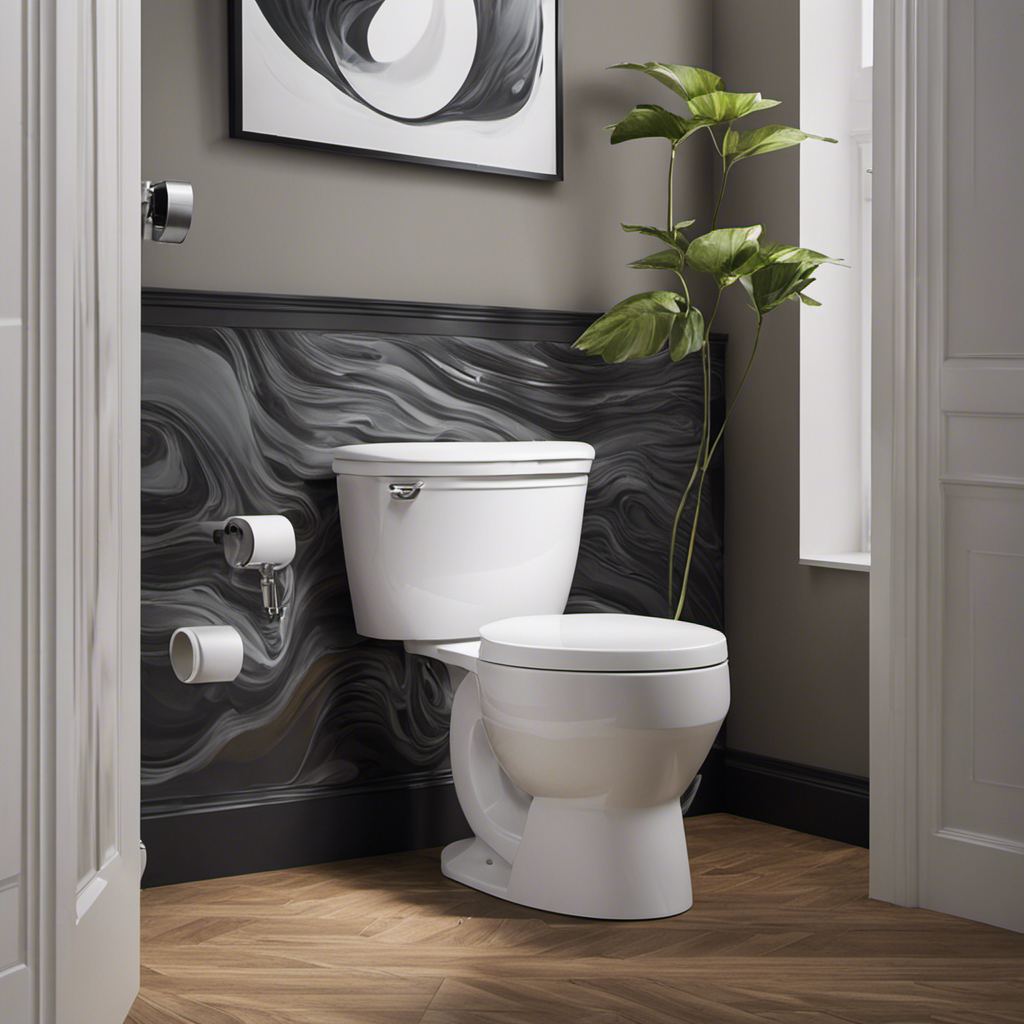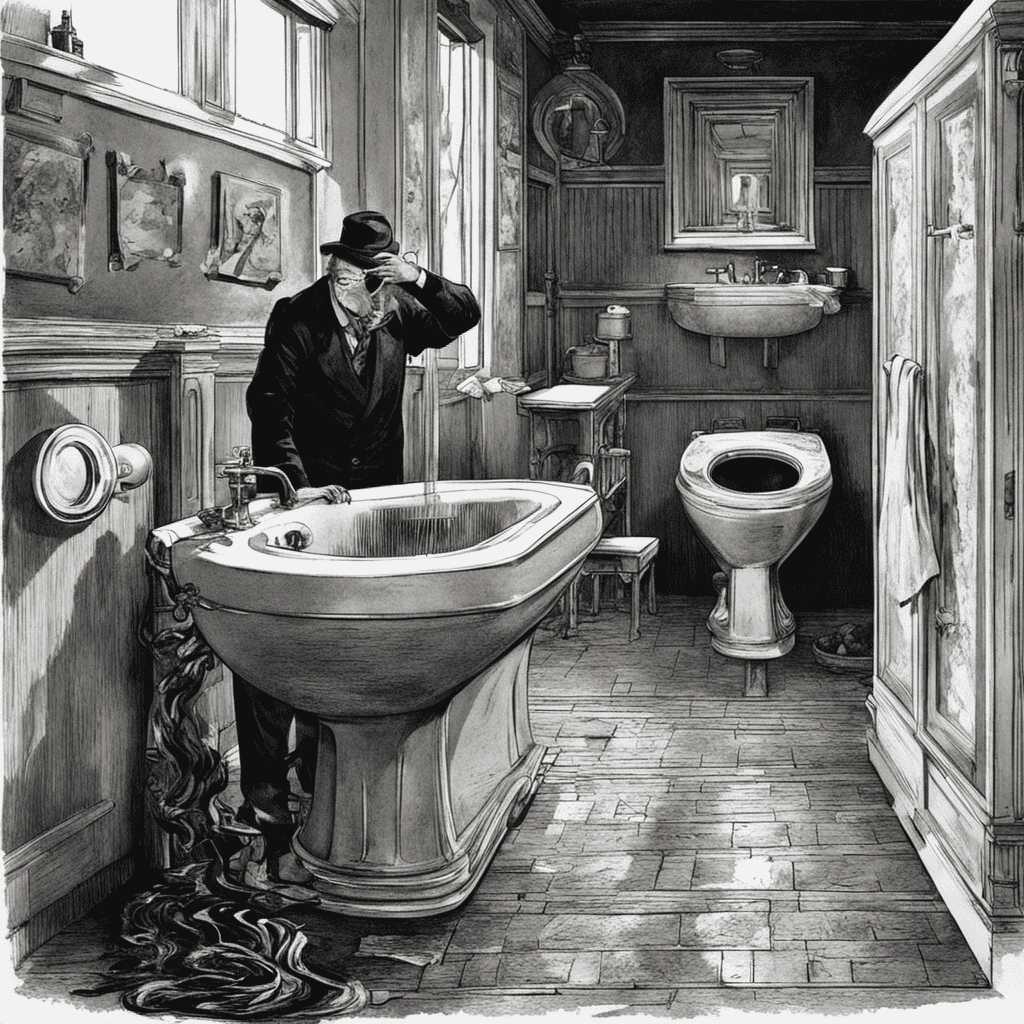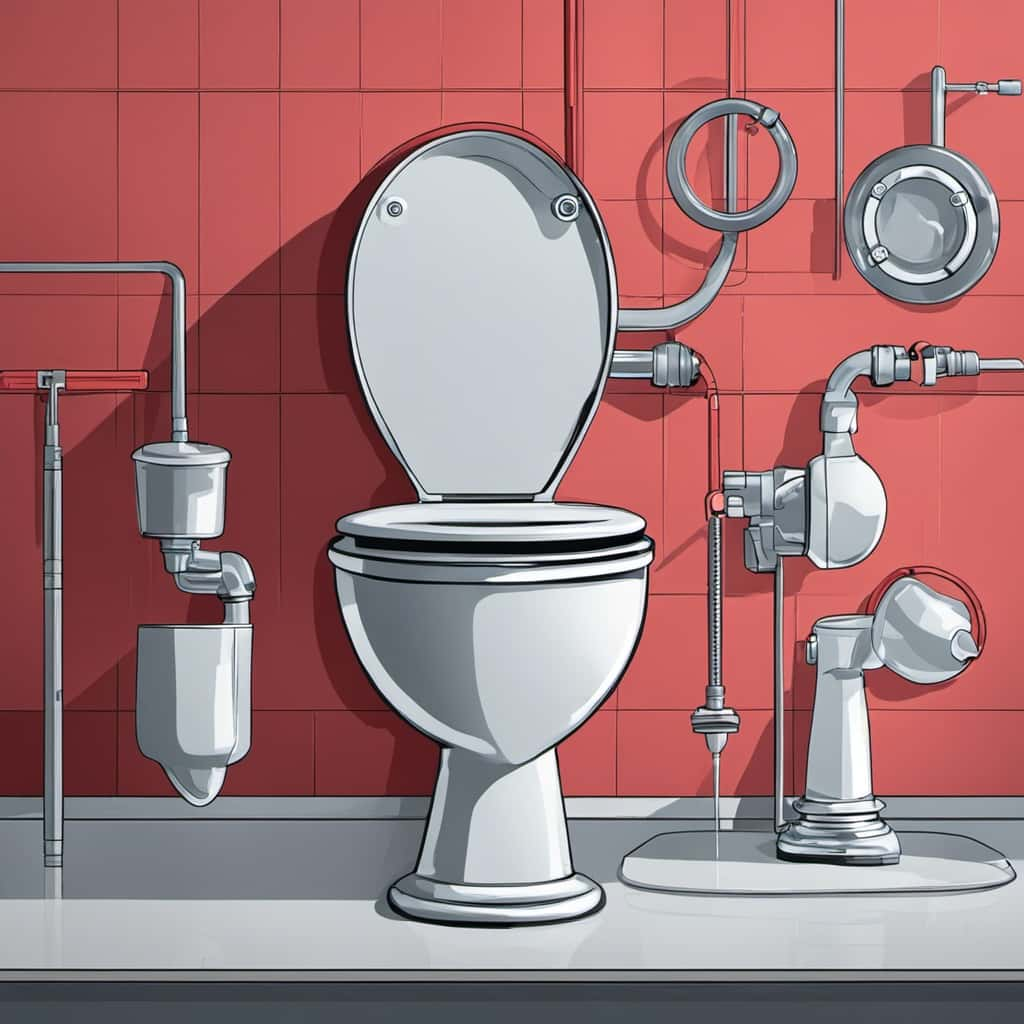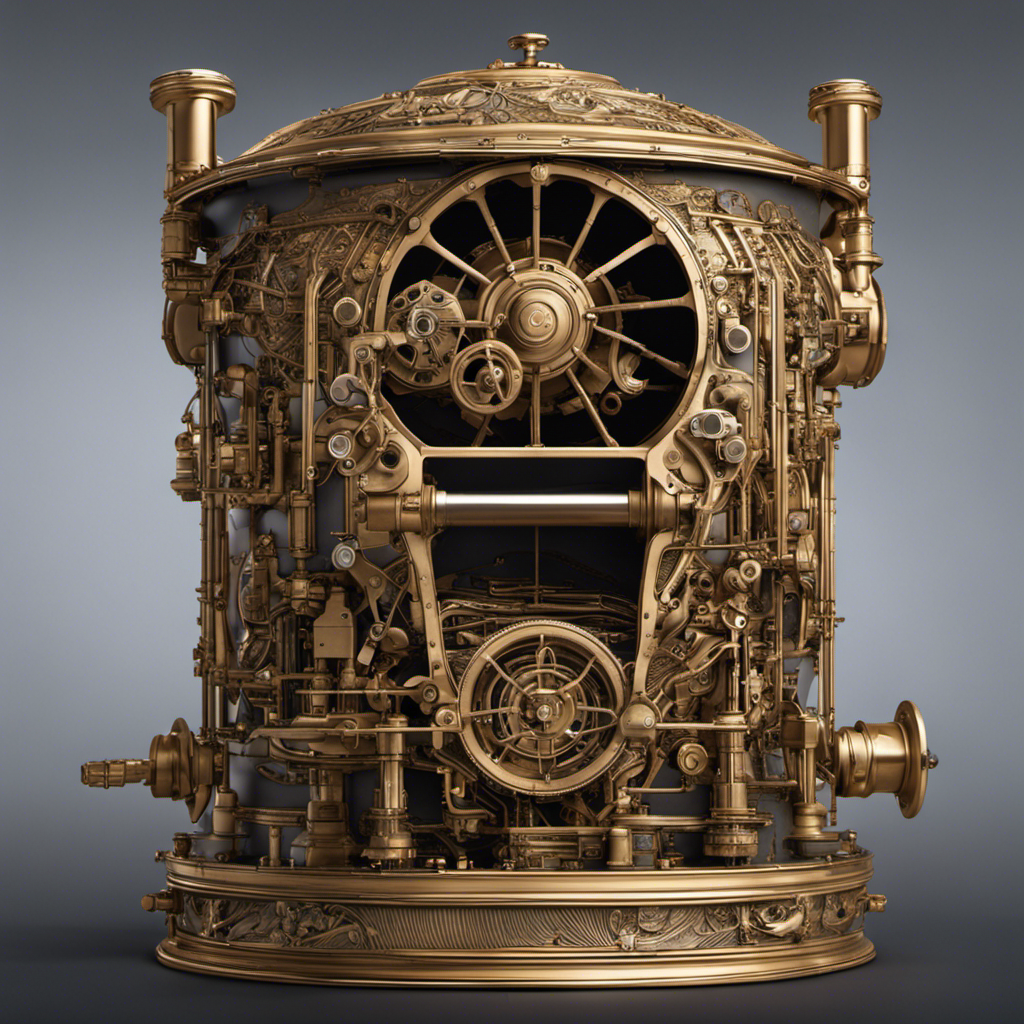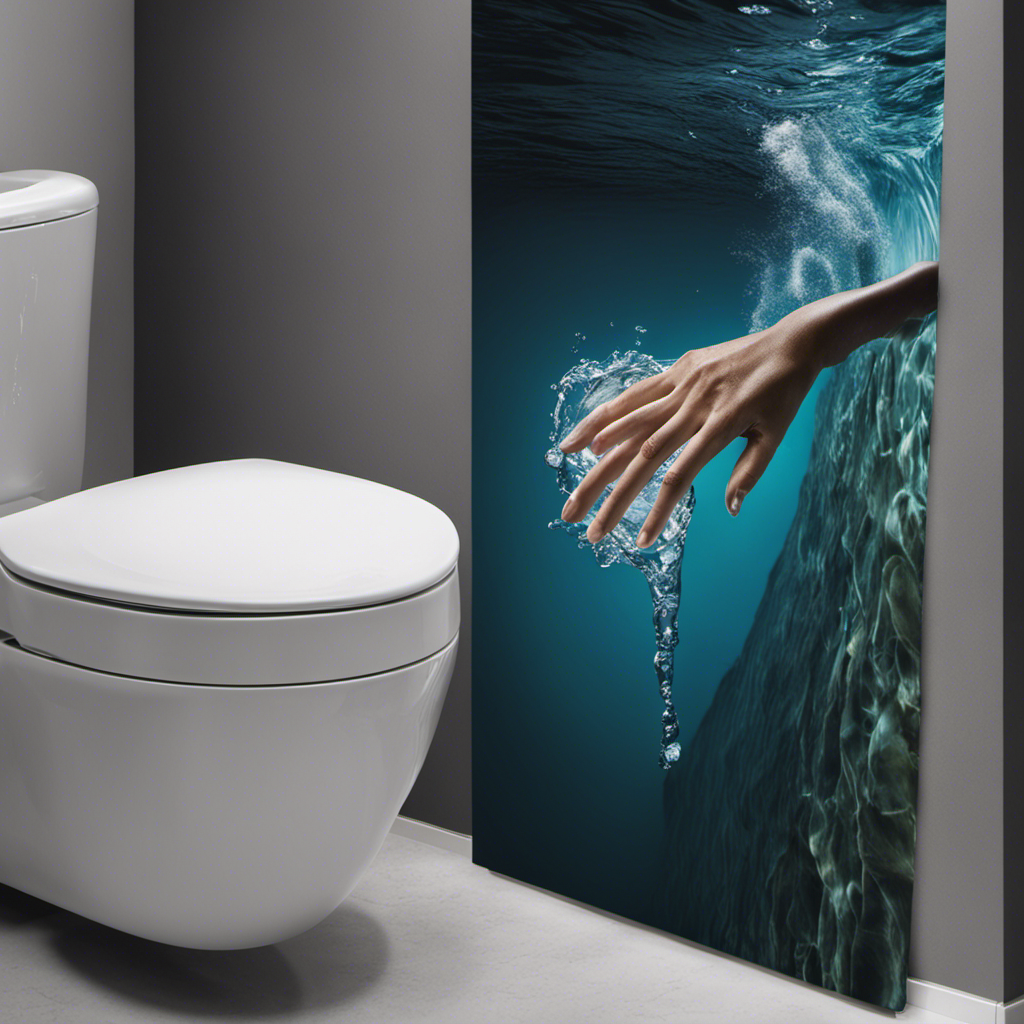I couldn’t believe the racket that came from my toilet every time I flushed. It was loud, annoying, and downright embarrassing. But after some investigation, I discovered that there are common causes for this noisy problem.
In this article, I will walk you through the different types of toilet noise, how to fix a loud flushing toilet, and even share some expert tips to prevent noisy flushes in the future. Get ready to say goodbye to the clamor and hello to a peaceful bathroom experience.
Key Takeaways
- Common causes of noisy flushing include faulty fill valves, loose flush handles, high water pressure, and malfunctioning flapper valves.
- Different toilet noise types can indicate specific issues, such as gurgling sounds indicating a clogged drain or vent pipe, hissing sounds suggesting a faulty fill valve, and thumping sounds indicating a loose or worn-out flapper valve.
- To fix a loud flushing toilet, you can adjust the water level in the tank, locate the water level adjustment screw or valve, decrease the water level to reduce the force and noise of the flush, and install soundproofing measures like a mat or foam. Professional help may be necessary in some cases.
- To prevent noisy flushes in the future, you can install a water pressure regulator, use a padded toilet seat, install soundproofing panels on walls, place a soundproofing mat under the toilet, and regularly maintain and clean the toilet.
Common Causes of Noisy Flushing
If you’re experiencing a noisy flushing sound, it could be due to common causes such as a faulty fill valve or a loose flush handle. In terms of toilet plumbing, the fill valve is responsible for controlling the water flow into the tank. When it malfunctions, it can create a loud noise during the flushing process. Similarly, a loose flush handle can cause vibrations that result in a noisy flush.
Another factor to consider is water pressure. If the water pressure is too high, it can cause turbulence in the pipes, leading to a loud flushing sound. Understanding these common causes of noisy flushing is essential in troubleshooting the issue.
Now, let’s delve into the different types of toilet noise to gain a deeper understanding.
Understanding Toilet Noise Types
To understand different types of sounds your toilet makes, you’ll first need to identify the specific noise it produces. Troubleshooting toilet noise can be a daunting task, but with a systematic approach, it becomes easier to pinpoint the source of the problem.
Here are three common types of toilet noises and their potential causes:
-
Gurgling sound: This noise often indicates a clogged drain or vent pipe. The gurgling occurs as air tries to escape through the water, causing bubbles and a distinct sound.
-
Hissing sound: A hissing noise usually suggests a faulty fill valve. The fill valve controls the water level in the tank and may be leaking, causing the hissing sound as water flows into the tank continuously.
-
Thumping sound: A thumping noise during flushing could indicate a loose or worn-out flapper valve. The valve may not be sealing properly, causing water to rush out forcefully and create the thumping sound.
How to Fix a Loud Flushing Toilet
You can easily fix a loud flush by adjusting the water level in the tank. When a toilet flushes loudly, it can be quite disruptive and irritating. Troubleshooting loud toilets involves identifying the source of the noise and finding the appropriate solution.
One common cause of a loud flush is excessive water pressure, which can be resolved by adjusting the water level in the tank. To do this, locate the water level adjustment screw or valve on the fill valve assembly. By turning the screw or adjusting the valve, you can decrease the water level, reducing the force and noise of the flush.
Additionally, soundproofing measures can be taken to further minimize the noise, such as installing a soundproofing mat or using a sound-absorbing foam.
Preventing Noisy Flushes in the Future
Installing a water pressure regulator can help prevent future loud flushes. When the water pressure in your plumbing system is too high, it can cause the toilet to make loud noises during flushing. By installing a water pressure regulator, you can control the water pressure and reduce the noise level.
Here are some soundproofing options for toilets to further minimize noise:
- Use a padded toilet seat: Adding a padded seat can absorb some of the vibrations and reduce the noise.
- Install soundproofing panels: These panels can be attached to the walls surrounding the toilet to dampen the sound.
- Use a soundproofing mat: Placing a soundproofing mat under the toilet can help absorb vibrations and reduce noise transmission.
By implementing these soundproofing options and regulating the water pressure, you can significantly reduce the noise levels during toilet flushing.
Now let’s explore some expert tips for quiet toilet flushing.
Expert Tips for Quiet Toilet Flushing
One way to minimize loud sounds when the toilet is flushed is by adjusting the water pressure with a regulator. By controlling the flow of water into the toilet tank, we can reduce the noise produced during the flushing process.
Another effective method is to soundproof the walls and floors surrounding the bathroom. This can be done by adding insulation materials, such as acoustic panels, to absorb the sound waves.
Additionally, choosing the right toilet model can make a significant difference in noise reduction. Some of the quietest toilet models on the market are equipped with advanced flushing systems that are specifically designed to minimize noise. These models often feature larger trapways and water surface areas, which help to muffle the noise of the flushing process.
Conclusion
After thoroughly investigating the theory behind noisy flushing toilets, it has become clear that there are various causes for this irritating issue. By understanding the different types of toilet noise and implementing the appropriate fixes, one can successfully eliminate the excessive noise.
Additionally, following preventive measures can help avoid future instances of noisy flushes. With these expert tips and a deeper understanding of the problem, individuals can now enjoy a quieter and more peaceful bathroom experience.
